Thu., Mar. 2, 2006
The 1S1P reports and Optional Assignment #3 were collected today.
The distribution of the Expt. #3 materials began today. Expt. #3
reports are due Tue., Mar. 21. Collect your data now and return
your materials sometime next week so that you can pick up the
supplementary information
sheet.
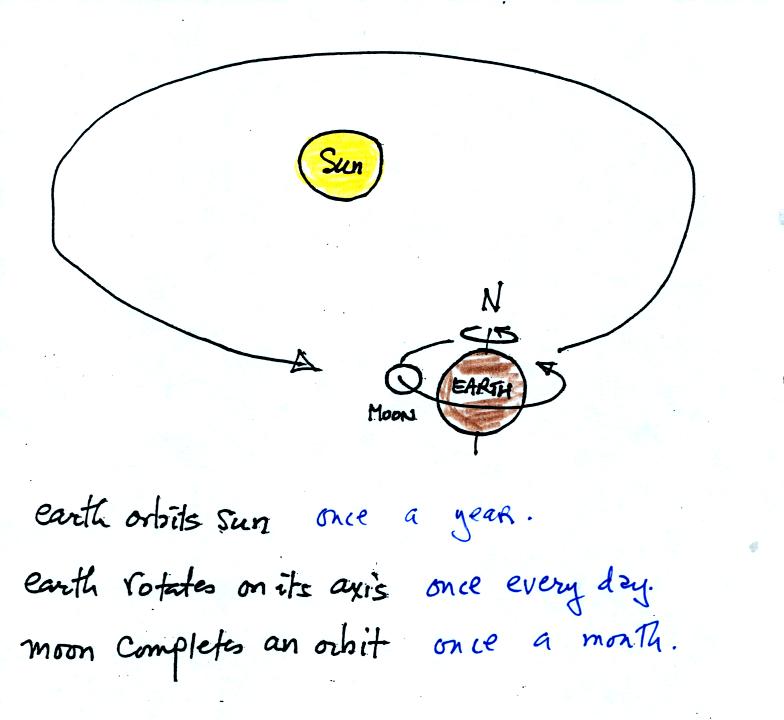
Review of a few basics before covering the causes of seasonal
variations on the earth (p. 73 in the photocopied notes).
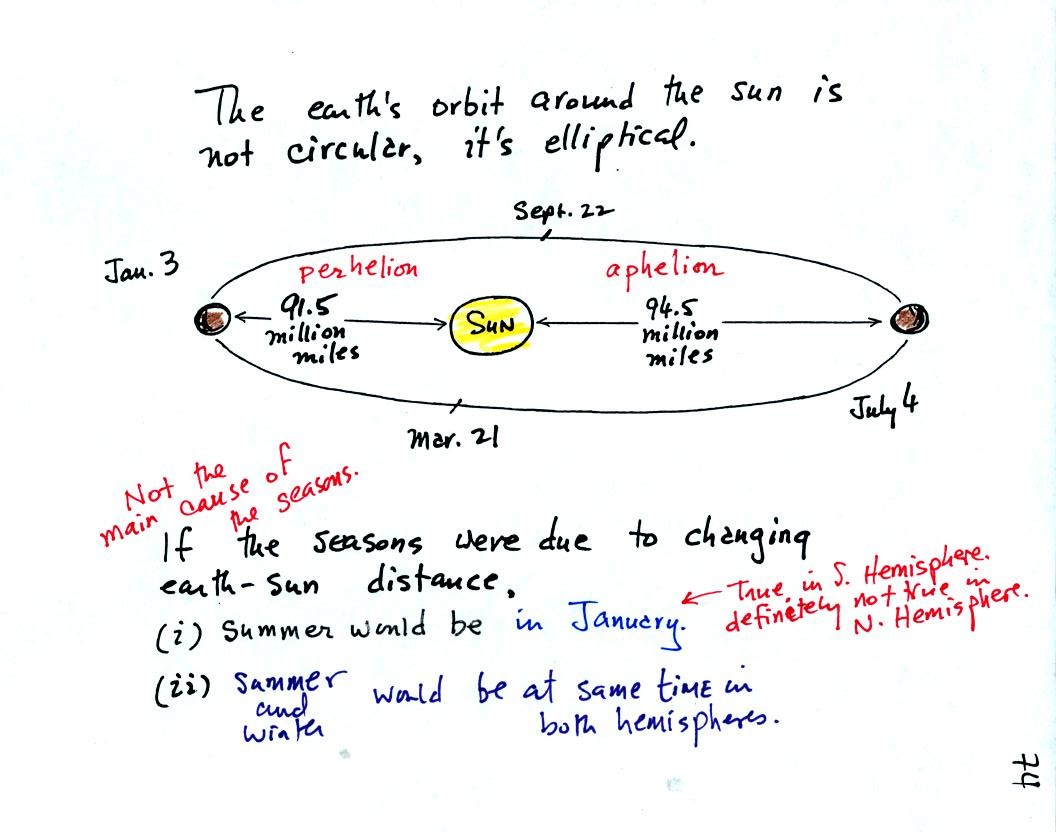
The earth is closer to the sun in January than in
July. If
this were the main cause of the seasons, summer in Tucson would be in
January and winter would be in July. Summer and winter would both
occur at the same times in both hemispheres. This changing
distance
between the earth and the sun has an effect but is not the main cause
of seasonal changes.
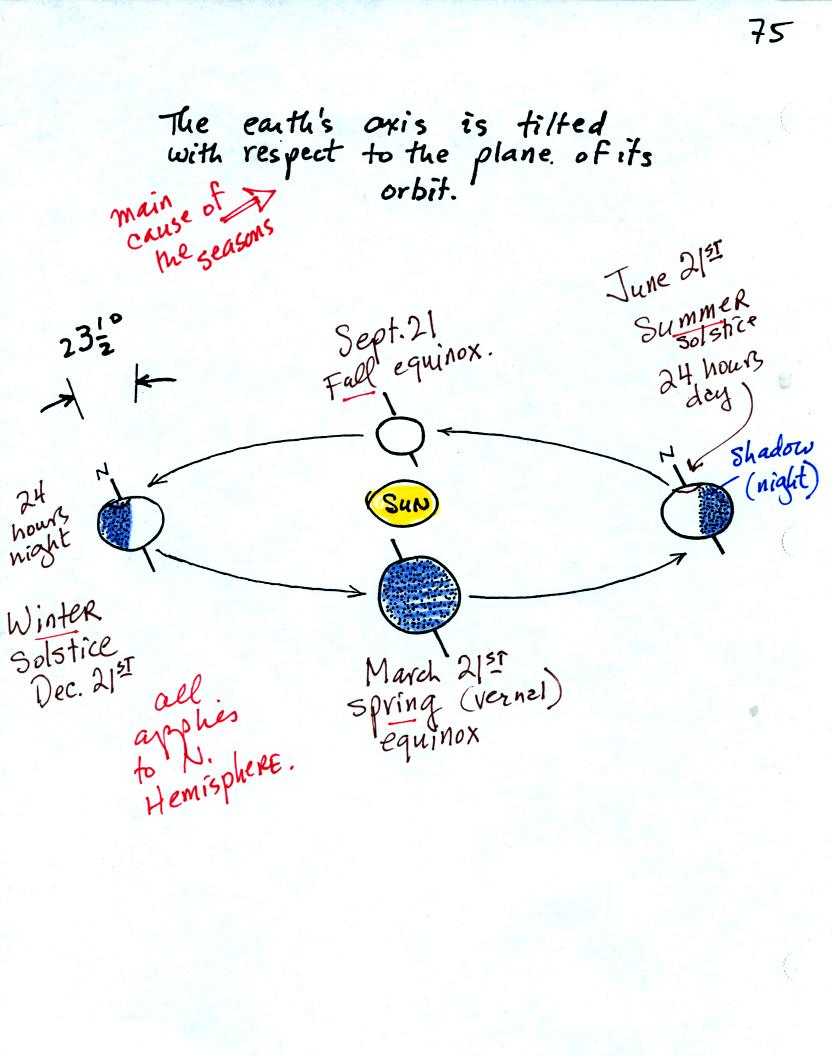
You should be able to start with a blank sheet of paper and
draw a
picture like this. Note how the N. Pole tilts away from the sun
on Dec. 21st, the winter solstice. The N. Pole is tilted toward
the sun on June 21. This changing orientation of the earth
relative to the sun is the main cause of the seaons.
Now imagine travelling over to the far side of this picture, turning
around and looking back toward the earth and sun. This next
picture shows you what you'd see.
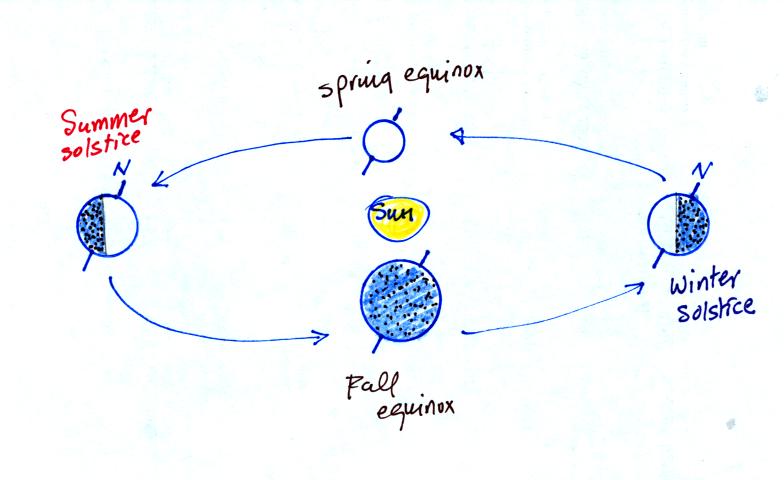
Even though the earth is tilting in a differentt direction
you
shouldn't have any trouble correctly identifying the solstices and
equinoxes in this picture.
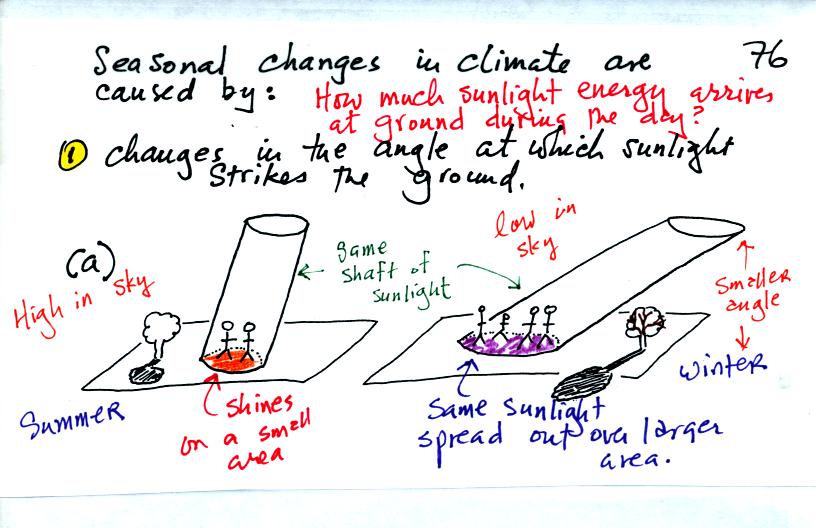
In the summer when the sun reaches a high elevation angle above the
horizon, an incoming beam of sunlight will shine on a small area of
ground. The ground will get hot. In the winter the sun is
lower in the sky. The same beam of sunlight gets spread out over
a larger area. The result is the the ground won't get as hot.

This shows the relative sizes of the areas of ground illuminated by
shaft of sunlight coming from overhead, a 60o elevation
angle and a 30o
elevation angle. The 30o "patch" of ground is twice as
large as
the 90o patch.
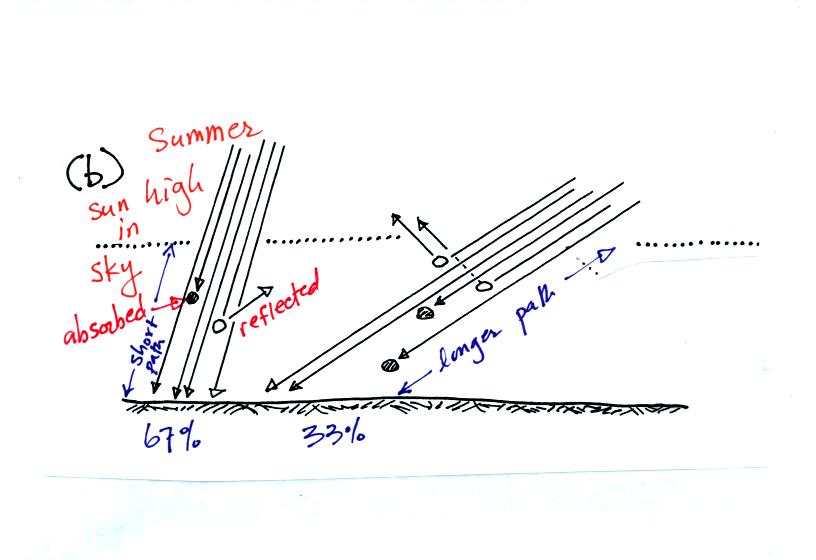
As sunlight passes through the atmosphere it can be absorbed or
reflected. On average only about 50% of the sunlight arriving at
the top of the atmosphere actually makes it to the ground. A beam
of sunlight that travels through the atmosphere at a low angle (right
picture above) is less intense than beam that passes through the
atmosphere more directly (left picture).
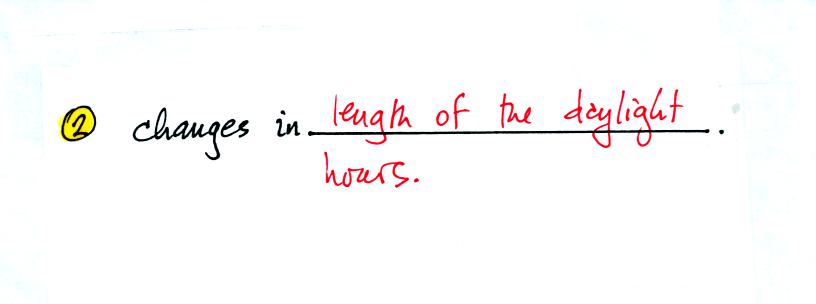
The sun shines for more time in the summer than in the winter. In
Tucson the days are around 14 hours long near the time of the summer
solstice. In the winter the sun only shines for 10 hours on the
winter solstice. Days are 12 hours long on the equinoxes.
We took a
detour at this point and learned a little bit about Experiment
#3.
In Experiment #3 a piece of aluminum, painted black, is pointed at the
sun. A thermometer is inserted into the side of the block.
You measure how quickly the block heats up. The dowel is used to
properly orient the apparatus; the dowel won't cast much shadow when
the block is pointed straight at the sun.
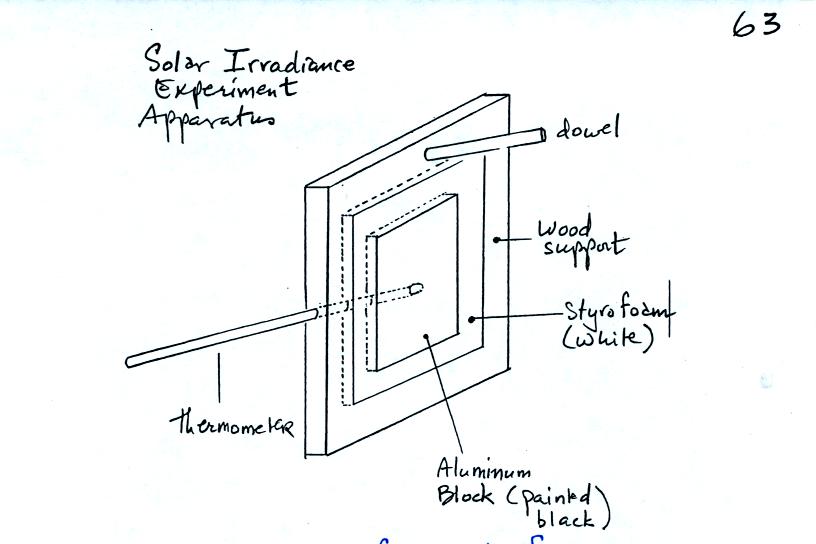
The object of Expt. #3 is to measure the solar irradiance. Solar
irradiance is a measure of the energy in sunlight and has units of
calories per cm2 per minute. It is basically the amount of energy
(calories) that pass through a 1 cm x 1 cm square every minute.
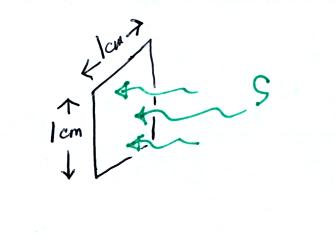
At the top of the atmosphere So is about 2 calories/(cm2 min). At
the ground you would expect to measure about half of this value, 1
cal/(cm2 min).
How much energy would a collector of area A absorb if left in the sun
for a time Δt?

As the collector absorbs energy it will warm up. You should
remember the formula below from class a week or two ago.
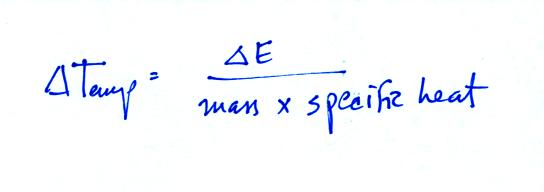
Now we will take ΔE from the first equation
and substitute it into the second equation. Here's what you get:

Now you solve this equation for the solar irradiance variable S.

So if you leave a piece of aluminum (with known mass, area, and
specific heat) out in the sun and measure how quickly it warms up, you
have a way of measuring the solar irradiance, the energy in sunlight.

There is a lot of information on this figure.
You need work
through this figure numbered point by numbered point. You'll find
written explanations of each point on p. 77b in the photocopied notes
which is reproduced below.
The cloud shown next to Point 5 above refers to a band of clouds that
circles the globe at the latitude where the sun passes overhead at
noon. You can usually make out this band of clouds on a global
satellite picture. At the present time, just a few weeks
after the fall equinox the band of clouds is near the equator. It
will move south of the equator as we get closer to the winter
solstice. Then it will move back to the equator by next March and
move into the northern hemisphere next summer.
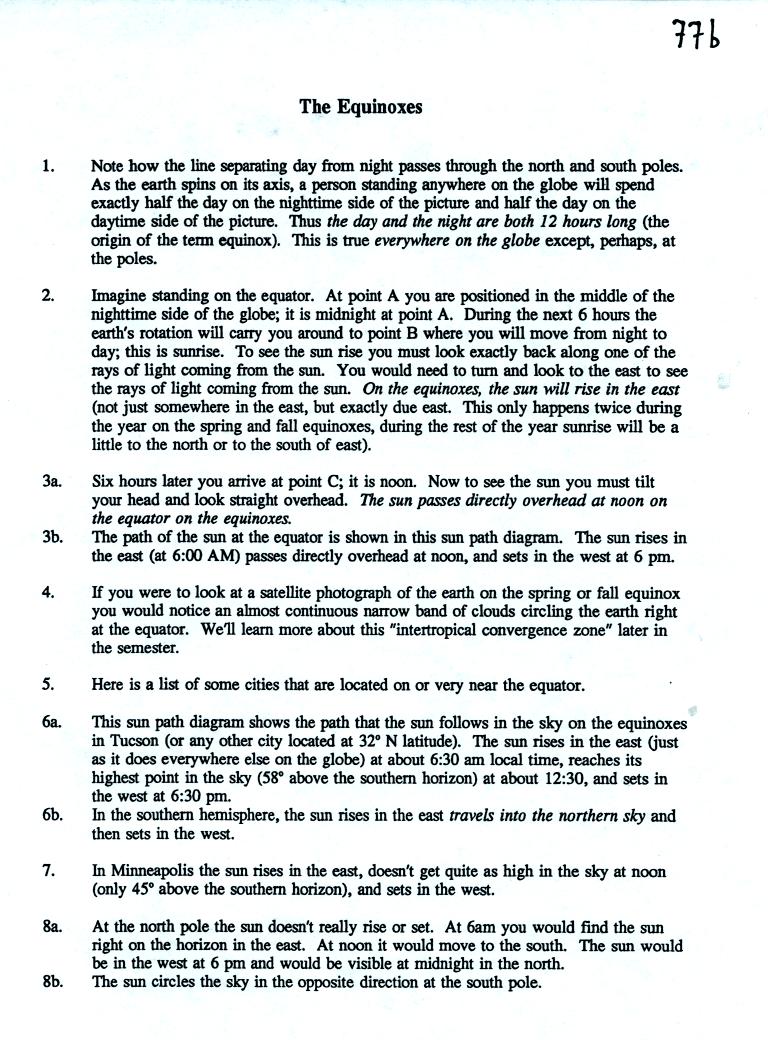
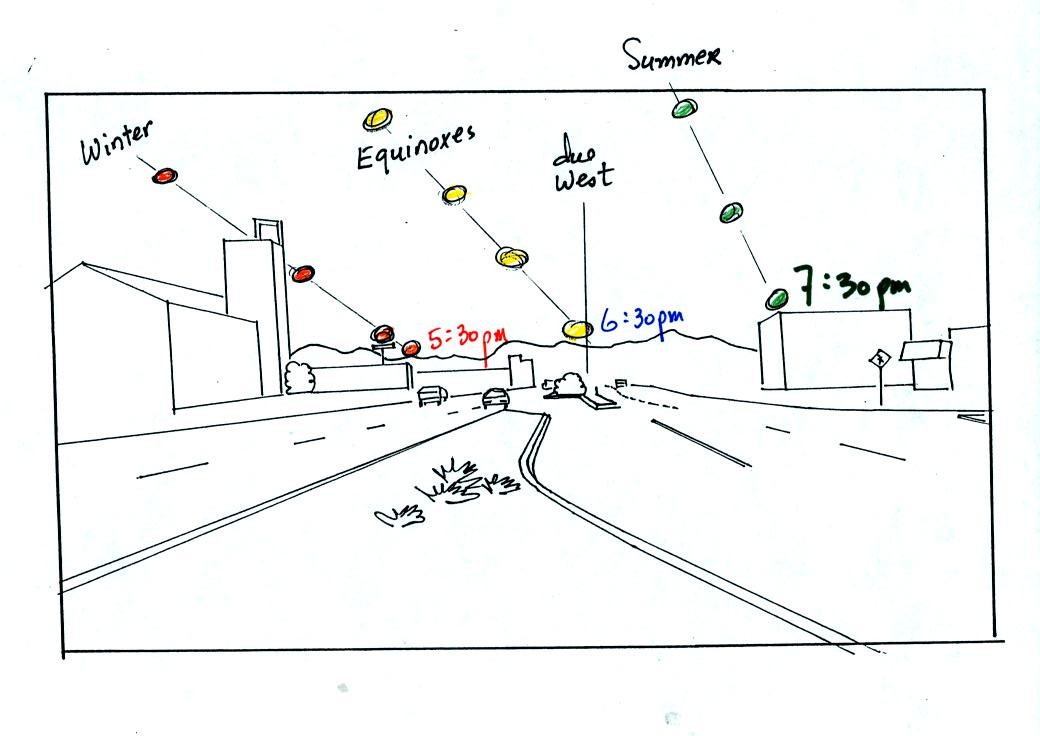
Looking west along Speedway boulevard from the median
(between Tucson Blvd and Country Club). The sun sets in the West
exactly on the equinoxes at around 6:30. The sun is in the eyes
of all the automobile drivers heading west. You need to be
careful crossing the street at sunrise and sunset at these times of
year.
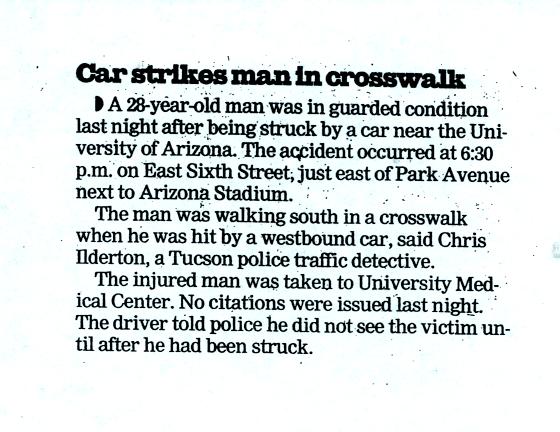
Here is an actual traffic accident report from the Arizona
Daily
Star. This accident occurred on or near the fall equinox.

















